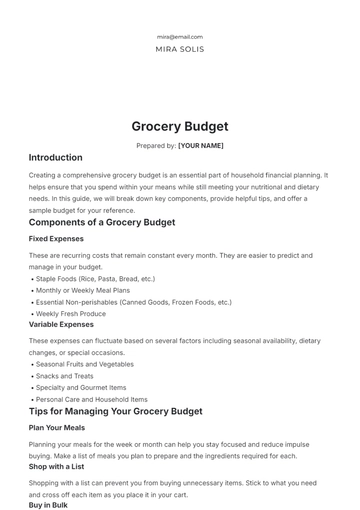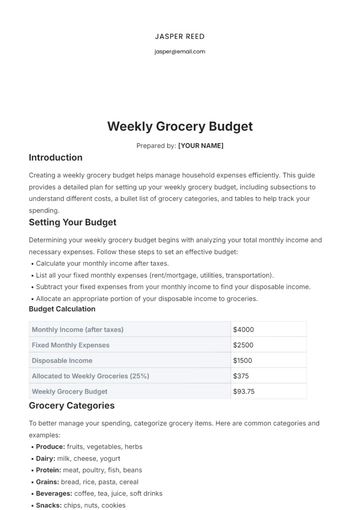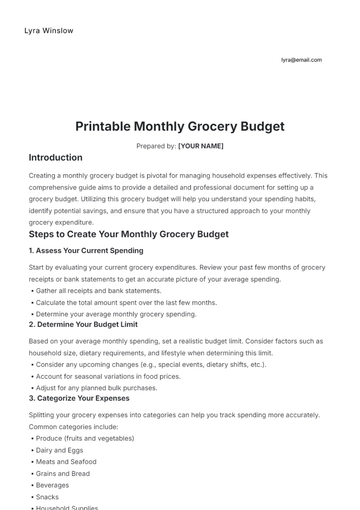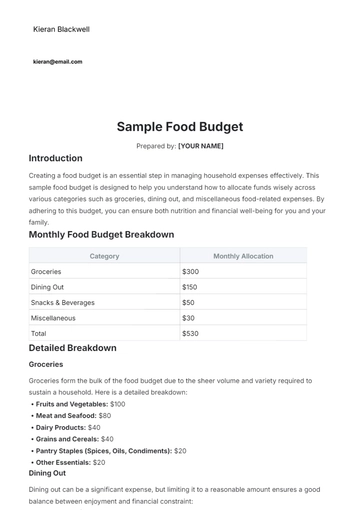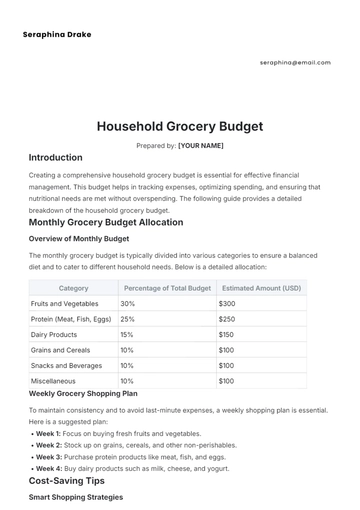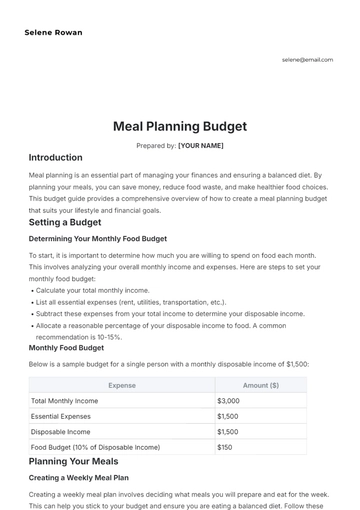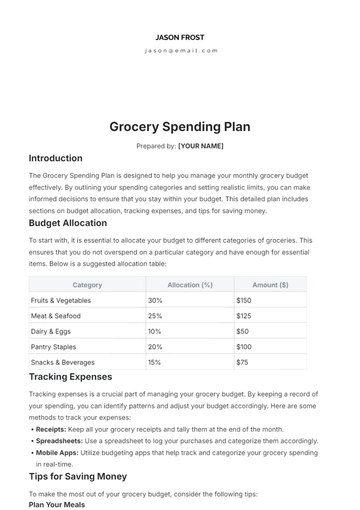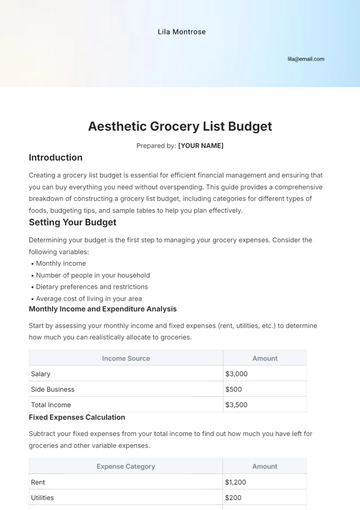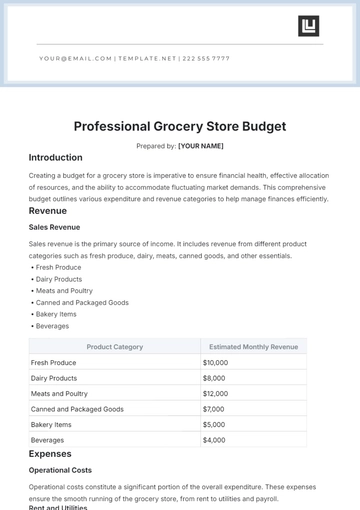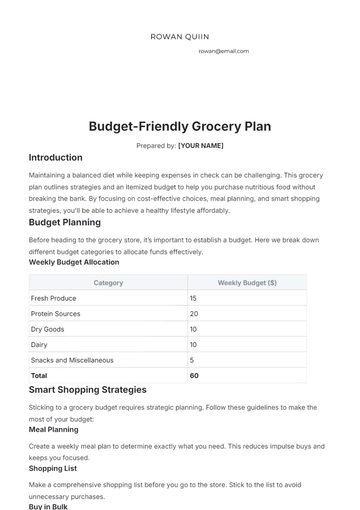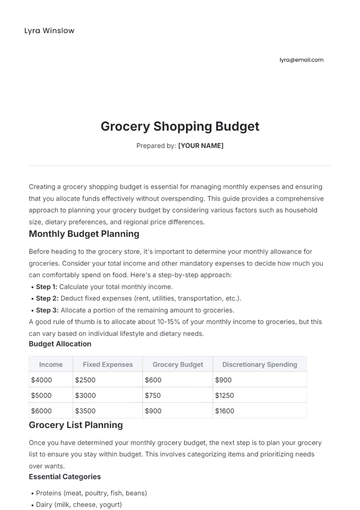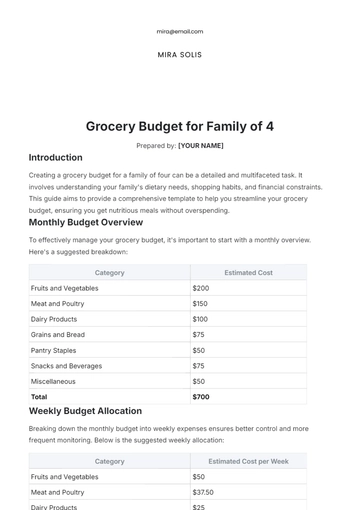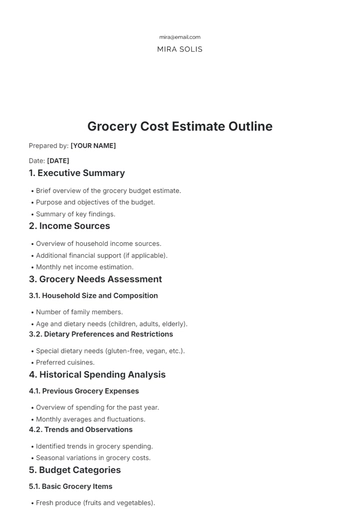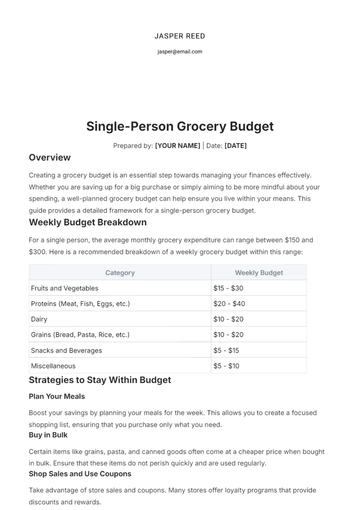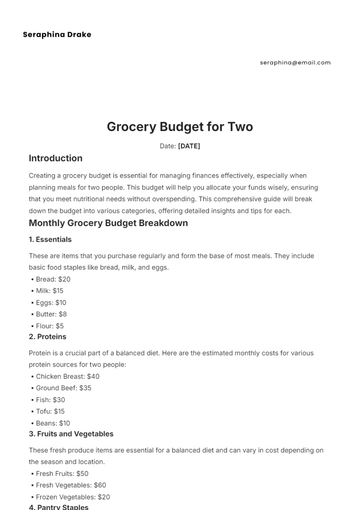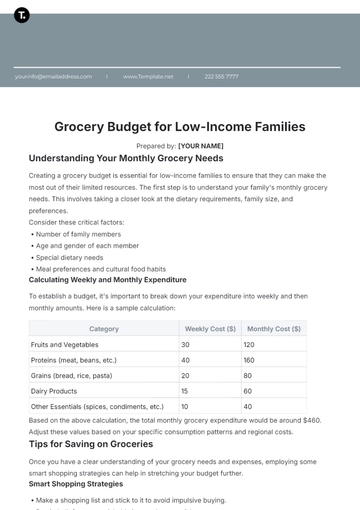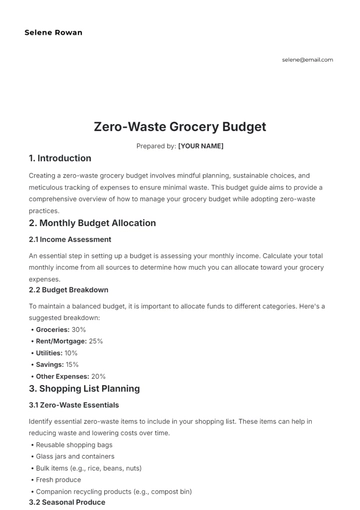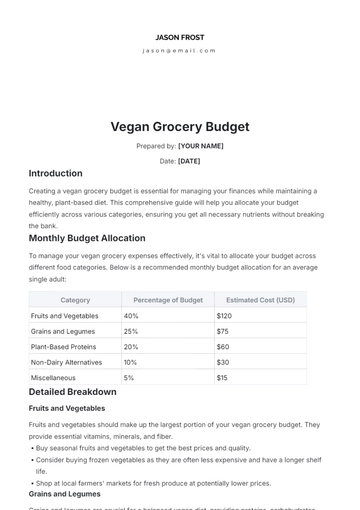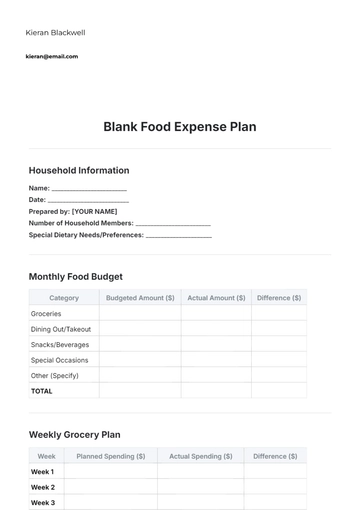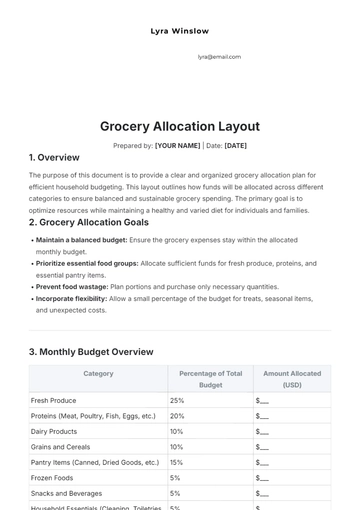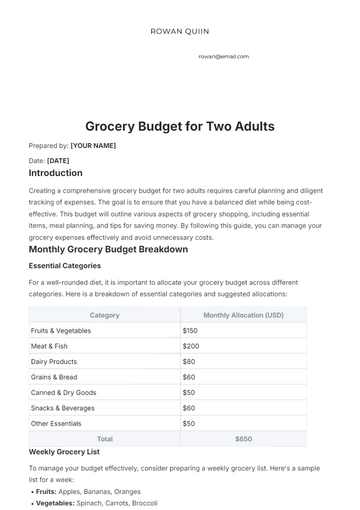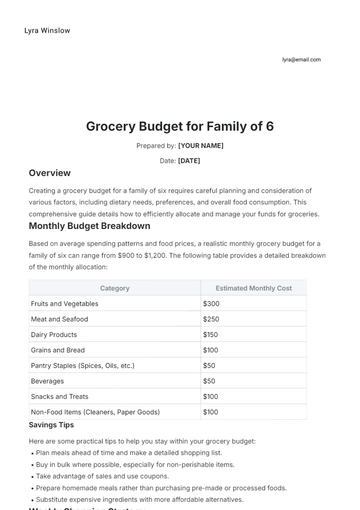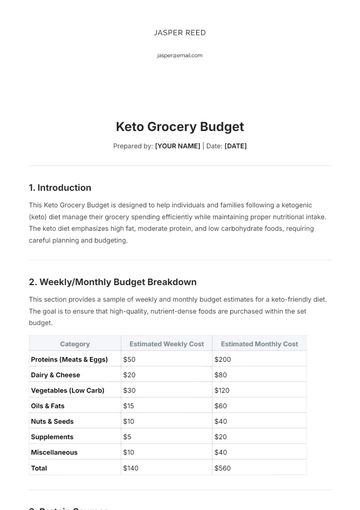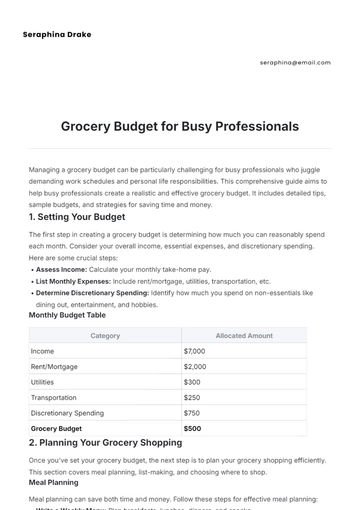Free Low-Carb Grocery Budget
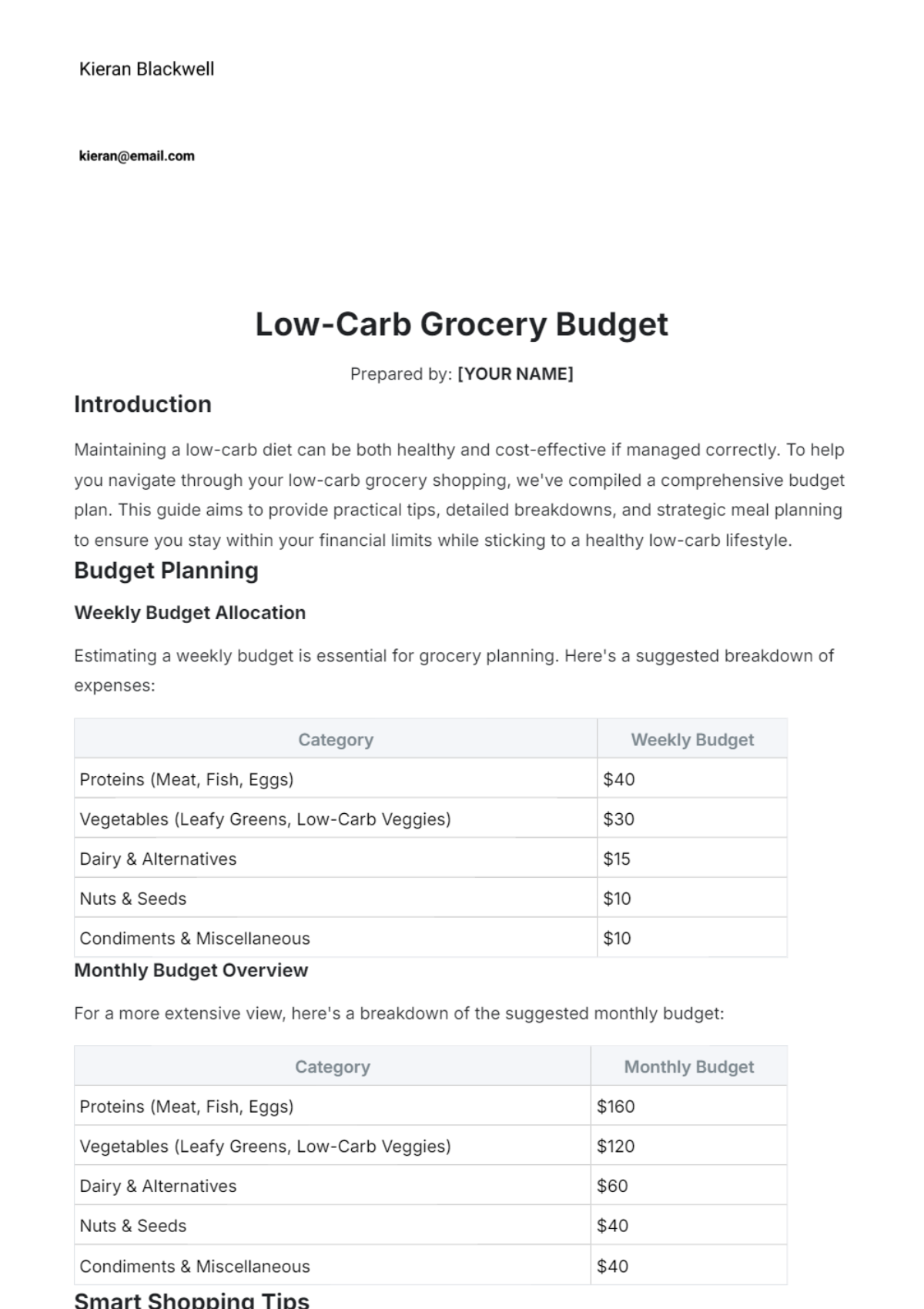
Prepared by: [YOUR NAME]
Introduction
Maintaining a low-carb diet can be both healthy and cost-effective if managed correctly. To help you navigate through your low-carb grocery shopping, we've compiled a comprehensive budget plan. This guide aims to provide practical tips, detailed breakdowns, and strategic meal planning to ensure you stay within your financial limits while sticking to a healthy low-carb lifestyle.
Budget Planning
Weekly Budget Allocation
Estimating a weekly budget is essential for grocery planning. Here's a suggested breakdown of expenses:
Category | Weekly Budget |
|---|---|
Proteins (Meat, Fish, Eggs) | $40 |
Vegetables (Leafy Greens, Low-Carb Veggies) | $30 |
Dairy & Alternatives | $15 |
Nuts & Seeds | $10 |
Condiments & Miscellaneous | $10 |
Monthly Budget Overview
For a more extensive view, here's a breakdown of the suggested monthly budget:
Category | Monthly Budget |
|---|---|
Proteins (Meat, Fish, Eggs) | $160 |
Vegetables (Leafy Greens, Low-Carb Veggies) | $120 |
Dairy & Alternatives | $60 |
Nuts & Seeds | $40 |
Condiments & Miscellaneous | $40 |
Smart Shopping Tips
Bulk Buying
Bulk buying can significantly reduce costs, especially for non-perishable items. Buying larger quantities at wholesale clubs or during sales can provide a substantial saving in the long run.
Consider bulk buying for:
Nuts and seeds
Meat (especially when on sale)
Frozen vegetables
Seasonal Shopping
Focusing on seasonal produce is another effective way to save money. Seasonal vegetables are often cheaper, fresher, and more nutritious.
Best seasonal buys:
Spring: Asparagus, spinach, radishes
Summer: Zucchini, tomatoes, berries
Fall: Pumpkin, kale, Brussels sprouts
Winter: Cauliflower, Swiss chard, turnips
Store Brands and Generic Options
Don't overlook store brands and generic options, as they can be just as nutritious and tasty but at a lower price compared to name-brand products.
Low-Carb Grocery List
Proteins
Chicken breast
Ground beef or turkey
Salmon or other fatty fish
Eggs
Bacon
Vegetables
Broccoli
Cauliflower
Leafy greens (spinach, kale, lettuce)
Zucchini
Peppers (red, green, yellow)
Dairy & Alternatives
Cheese (cheddar, mozzarella, feta)
Greek yogurt (unsweetened)
Almond milk (unsweetened)
Heavy cream
Butter
Nuts & Seeds
Almonds
Walnuts
Chia seeds
Pumpkin seeds
Condiments & Miscellaneous
Olive oil
Avocado oil
Herbs and spices
Mayonnaise (sugar-free)
Stevia or other low-carb sweeteners
Conclusion
Efficient budgeting for a low-carb lifestyle is entirely possible with careful planning and smart shopping techniques. By focusing on bulk buys, seasonal produce, and generic brands, you can maintain a nutritious and varied diet without overspending. Use the provided budget allocations and grocery lists to guide your weekly and monthly shopping, ensuring that you stay on track both nutritionally and financially.
- 100% Customizable, free editor
- Access 1 Million+ Templates, photo’s & graphics
- Download or share as a template
- Click and replace photos, graphics, text, backgrounds
- Resize, crop, AI write & more
- Access advanced editor
Stay on track with your low-carb diet using the Low-Carb Grocery Budget Template, exclusively available at Template.net. This customizable resource helps you manage expenses while focusing on healthy eating. Editable in our AI Editor Tool, it simplifies grocery planning, enabling you to maintain your low-carb lifestyle without exceeding your budget.
You may also like
- Budget Sheet
- Personal Budget
- Non Profit Budget
- Monthly Budget
- Project Budget
- HR Budget
- Company Budget
- Home Budget
- Weekly Budget
- College Budget
- Business Budget
- Construction Budget
- Small Business Budget
- Hotel Budget
- Annual Budget
- Home Renovation Budget
- Household Budget
- Student Budget
- Grocery Budget
- Marketing Budget
- Corporate Budget
- Startup Budget
- Manufacturing Budget
- Church Budget
- University Budget
- Annual Budget Plan
- Event Budget
- Operating Budget
- Travel Budget
- Food Budget
- IT and Software Budget
- School Budget
- Real Estate Budget
- Sales Budget
- Conference Budget
- Budget Finance
- Freelancer Budget
- Budget Advertising
